Meet The People Keeping Your Home Safe From Fires
To study fire, these researchers build homes just to torch them.
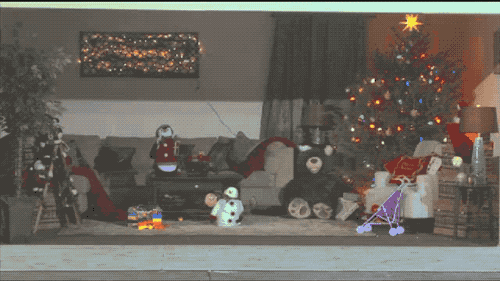
Whether pine, spruce, or fir, the Christmas tree is the holiday centerpiece for many homes. But the conical arrangement of branches and needles provide just the right kind of kindling for even the slightest spark.
“We call Christmas trees nature’s perfect fuel package,” says Steve Kerber, director of Underwriters Laboratories Fire Safety Research Institute (UL FSRI). “You have a very large surface area of fuel, and if it’s dry it burns very readily.”
Christmas tree fires are not common, but they are about four times more likely to cause deaths than other types of fires, according to data collected from 2011 to 2015 by the National Fire Protection Association. A faulty light bulb, a nearby lit candle, or a spark from an outlet is enough to set the festive evergreen ablaze. The flames can spill across an entire room in less than a minute—what firefighters refer to as “flashover.”
“You literally have no time to run,” says Kerber.
Firefighters notice an uptick in fire-related incidents during the colder holiday season. Candles, space heaters, and holiday decorations all become a greater issue around this time of year, says Kerber. And in today’s homes, a fire can quickly run rampant, burning hotter and faster than those of the past. Over the past 40 or so years, fires have changed—from the source of ignition to the rate of spread—because of how we design our homes and what we put inside them.
“Everybody thinks of fire as this old thing that’s been the same since forever, and nothing can be further from the truth,” says Kerber.
To better understand the intricacies of infernos, researchers and engineers study the dynamics of fire.
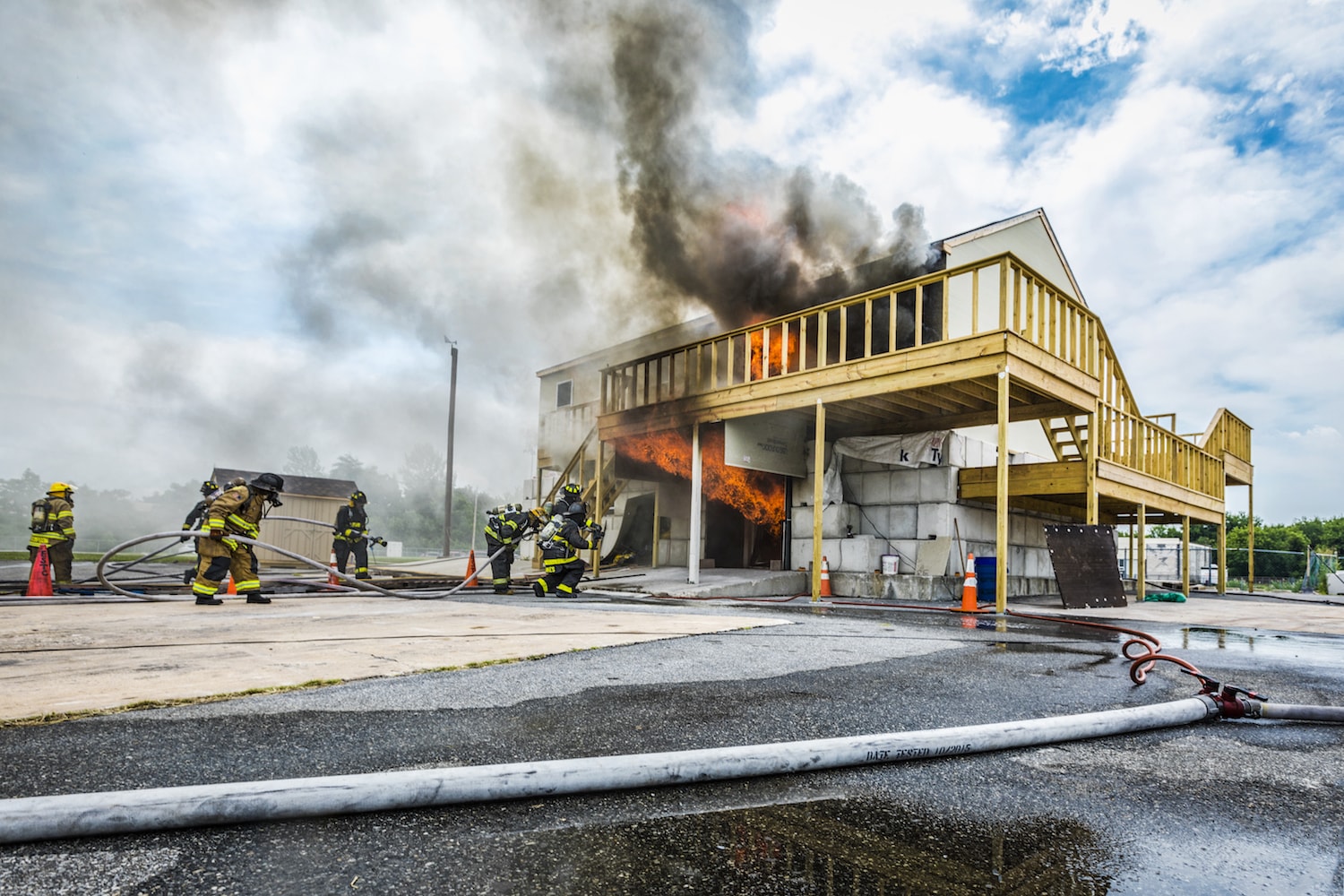
FSRI runs different tests in different environments. Credit: UL FSRI
Unlike the animalistic depictions in films, a fire’s behavior is fueled by science. Physics, chemistry, material science are all involved in how the flames progress, says Kerber. At UL FSRI in Maryland, researchers investigate how fires start, how they spread, how to better put them out, and how to keep firefighters and civilians safe. But running computer simulations and trying to learn under pressure during real emergencies can can be limiting. Instead, the team sparks up their own fires in carefully controlled conditions to study how they burn.
“We’ve burned townhouses in New York City, high rises in Chicago, schools in Toledo,” says Kerber. “You name it, we’ve burned it.”
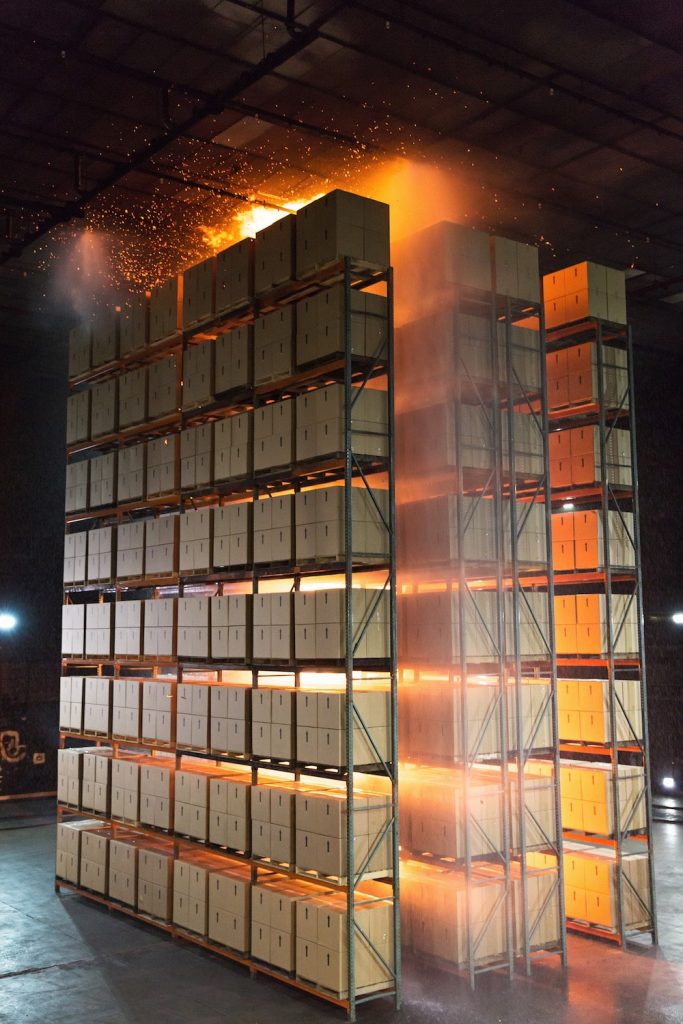
The team conducts experimental burns outdoors at fire fighting training facilities in Delaware County, Pennsylvania or on structures scheduled for demolition—such as stripmalls and apartments. But if they need to control for temperature and wind, the researchers will design complete to-scale homes, built with the intention of torching them.
At Underwriters Laboratories in Northbrook, Illinois, a large, black 120 by 120 foot warehouse with a moveable ceiling scaling up 60 feet allows the researchers at FSRI to scheme large, elaborate infernos. The team can construct multiple homes of various floor plan designs, and bug the structures with hundreds of sensors and cameras. They measure everything from temperature, deep flux, gas concentration, pressure, air flow, and moisture.
A house is set up like it’s been lived in, and is then lit on fire—maybe once on the roof, another time in a bedroom, and again in the kitchen. Researchers run multiple trials so that they can test different hypotheses and fire attack procedures. One research project can include 100 controlled fires, says Kerber. That means a lot of rebuilding.
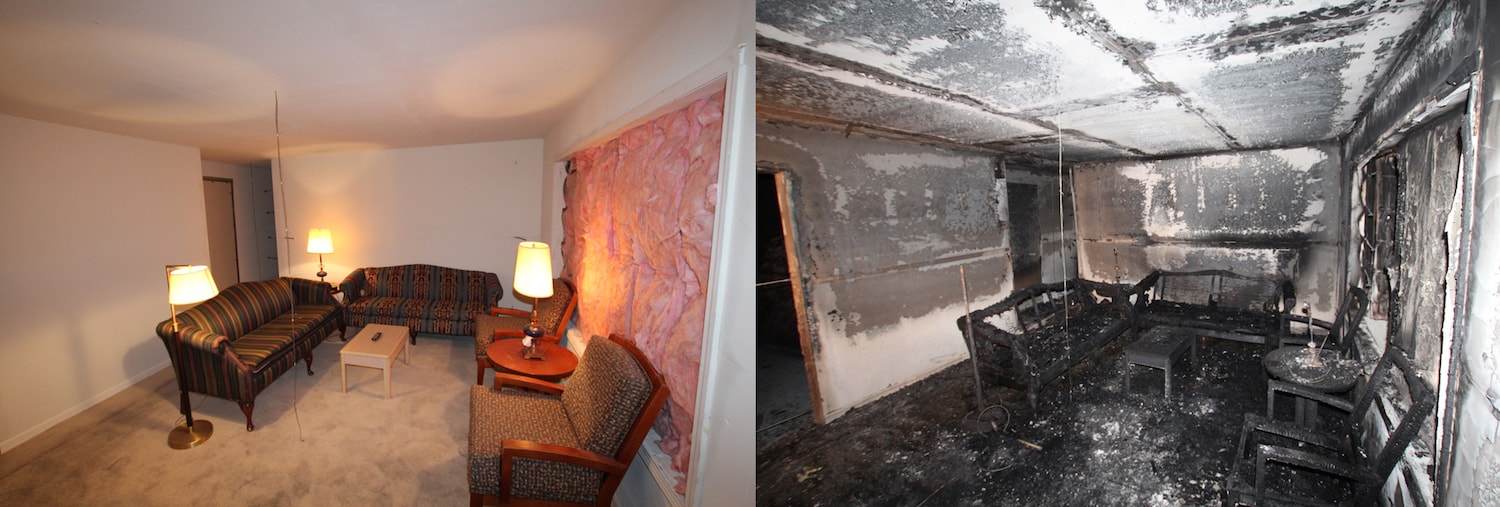
A living room before and after it's burned. Credit: UL FSRI
“Typically we have to gut the inside of it and build that back,” he says. “Anything that can involve impacting the outcome has to go.”
Wet wallboards, charred carpets, and soot-covered furnishings must all be replaced. The testing space is often filled with rows of identical couches, beds, televisions, and other items found in a typical household, because everything must be the same for each trial. The team is able to conduct burns every other day with rebuilding.
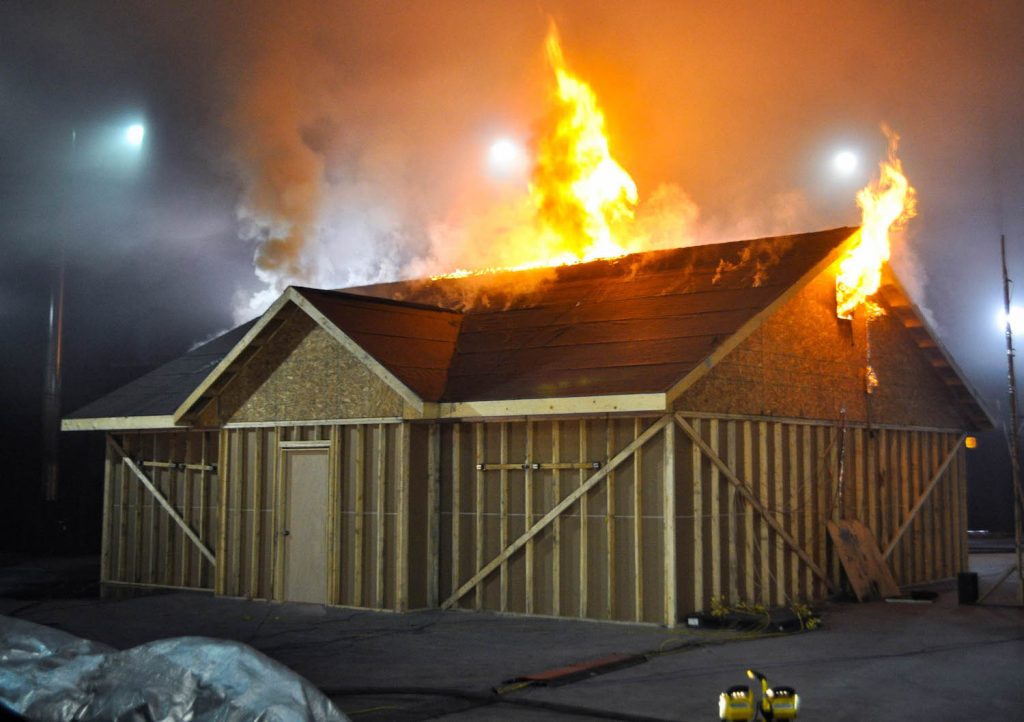
Depending on the design, the entire construction and setup of a home takes approximately four weeks. Meanwhile, a test can last anywhere from five to 30 minutes, says Kerber. But these large-scale experiments all help researchers better track how modern fires have changed.
Today, homes are much larger, shifting to the more popular open floor plans, and loftier ceilings. The aesthetic may be pleasing, but this could allow a kitchen fire to move more easily to the bedroom, whereas in older, compartmentalized houses fires are slowed. Ignition sources are also much more ubiquitous—all of our computers, smartphones, and devices increase the opportunity for a fire.
“We got lithium-ion batteries, which are a new animal when it comes to fire,” says Kerber. “They burn very quickly and go into thermal runaway.”
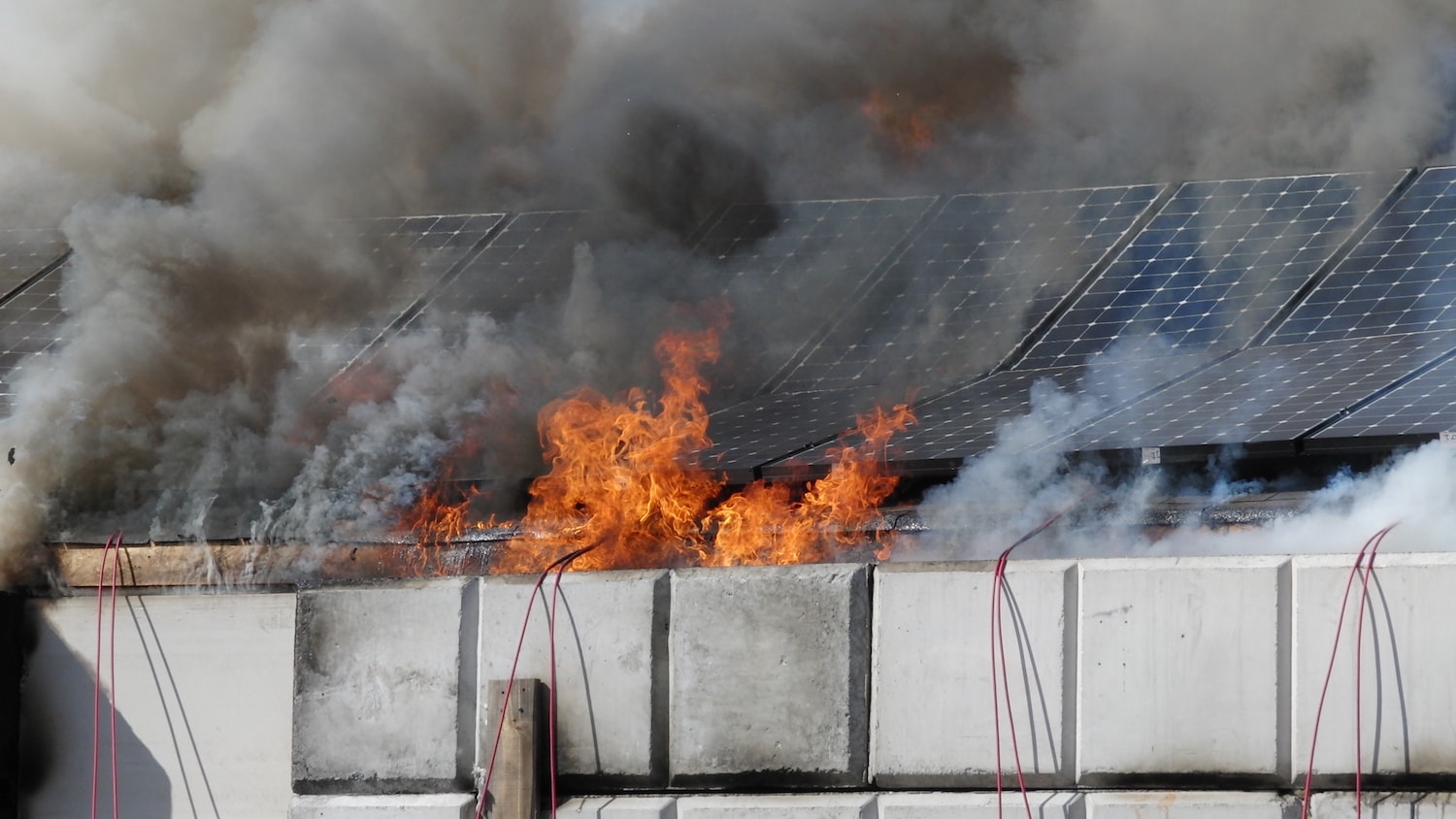
Fires have changed over time with the advent of new technologies. Here, FSRI runs an experiment on roof solar panels. Credit: UL FSRI
One of the biggest kindles to the flame are the common synthetic materials that make up the materials and furniture in our homes.
“Your grandmother probably had duck down or cotton in her pillows,” says John Drengenberg, former safety director at Underwriters Laboratories. “You have polyurethane foam in your pillows if you bought a new pillow recently.”
These synthetics have a very specific way of burning due primarily to their chemical composition. The root of products made from plastics and polyurethane foam (commonly known as memory foam) is petroleum, which cause them to burn faster. All-natural materials of the past tend to smolder as much as they flame, taking much longer for a fire to spread, explains Kerber.
In an experiment at UL, researchers started identical fires in a room filled with older, vintage items—called the “legacy room”—and one with items made of synthetic materials. In about 13 to 17 minutes, the legacy room slowly smolders, creating a shroud of gray smoke. Inhaling the smoke poses a health risk, but there is still enough time to evacuate. The room with modern furniture, on the other hand, combusts in flames in a mere minute and thirty seconds.
“It’s just this incredibly acrid, dense, superheated black smoke, where one breath would just kill you,” Casey Grant, executive director of the National Fire Protection Association, says about the modern room in the experiment (depicted in the video above).
The speed of the fire is not the only issue. These fires are much hotter and dangerous, explains Grant. Another study conducted in the 1980s compared the heat release rate of different constructions of upholstered chairs. A chair covered in all-natural cotton fabric and stuffed with cotton padding had a heat release rate of 370 kilowatts at about just over 15 minutes after it was ignited. A foam padded chair covered in polyolefin fabric, on the other hand, burned hotter faster, reaching as high as 1,990 kilowatts at just over four minutes of burning.
And it isn’t just furniture. During the holidays, artificial Christmas trees are also known to be a flammable synthetic cone of fuel.
“You now took synthetic material and you replicated the same surface area problem [as a Christmas tree],” says Kerber. “It just takes a little bit more to get ignited, but if it does it burns very quickly and produces a lot of smoke and a lot of heat, and is very dangerous.”
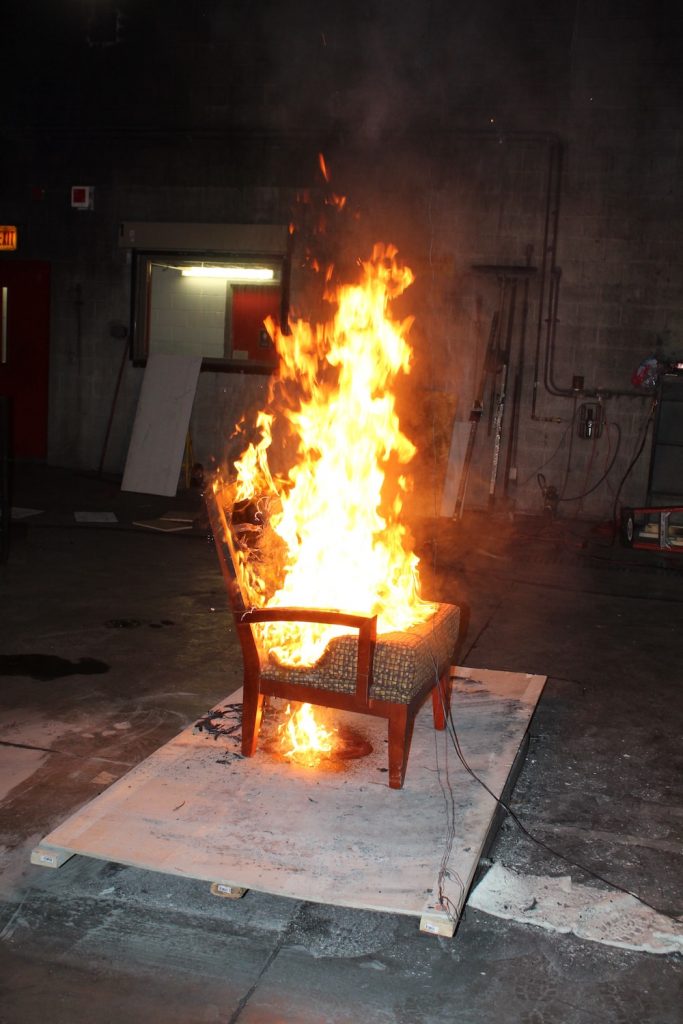
Polyurethane foam stuffed furniture and plastic-based appliances have dominated the market since their invention. The products are cheaper, more durable, easier to clean and maintain. Unfortunately, “the tradeoff tends to be the fire safety component of it,” says Kerber. “That’s why we need people to be more diligent, more respectful than ever of the potential of a fire.”
Every 90 seconds, a fire breaks out in a home in the U.S. In 2016, almost 3,000 people died from structure fires, according to 2016 data from the National Fire Protection Association.
This holiday, Kerber advises to always check for faulty outlets and broken lights, and keep potential ignition sources away from flammable items. But in the low chance a fire does start in your home, make sure you have an escape plan, he says.
“Everybody thinks that fire isn’t going to happen to them,” says Kerber. “Everybody thinks that they have a lot of time to get out if they do have a fire—and the reality is they don’t.”
Lauren J. Young was Science Friday’s digital producer. When she’s not shelving books as a library assistant, she’s adding to her impressive Pez dispenser collection.